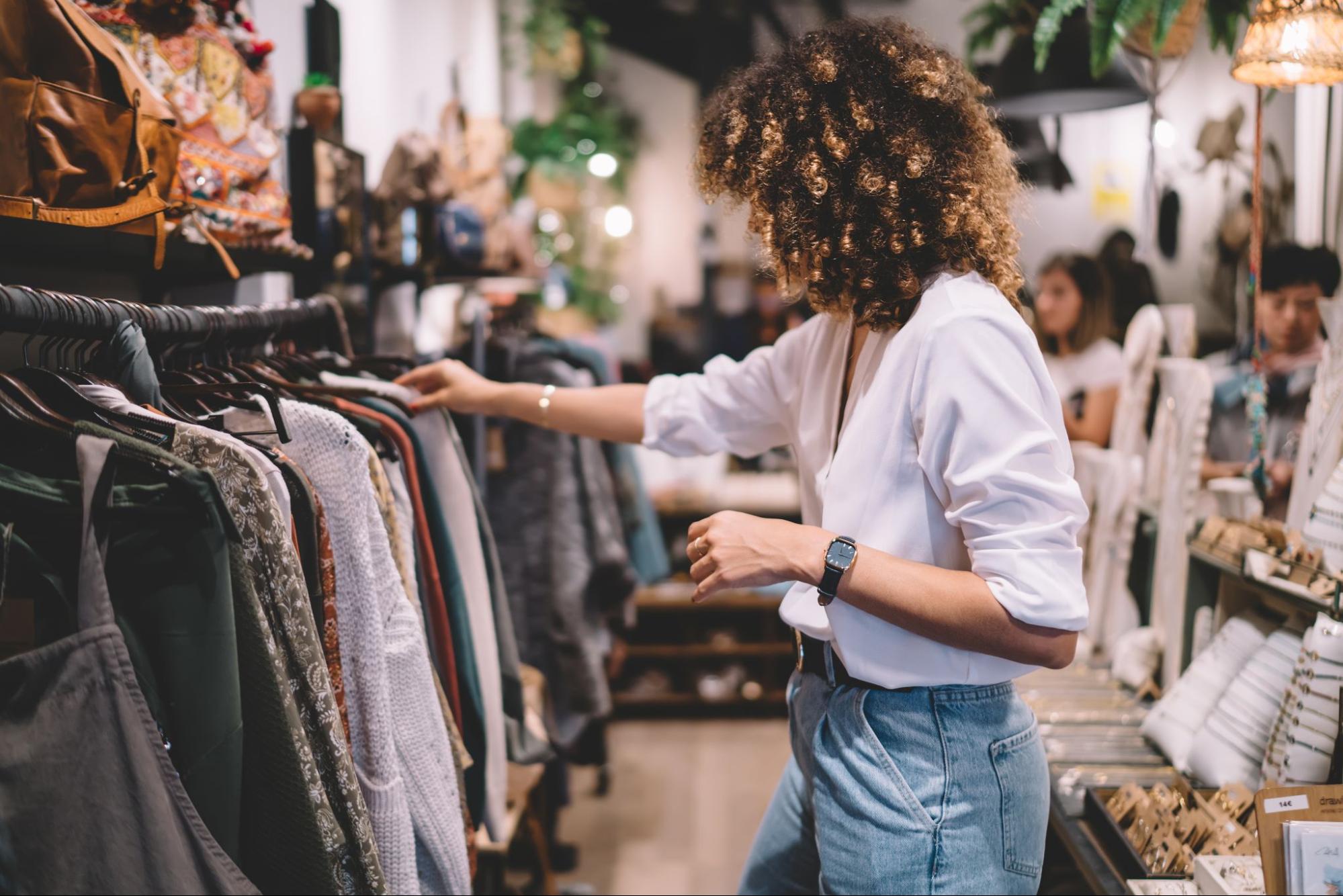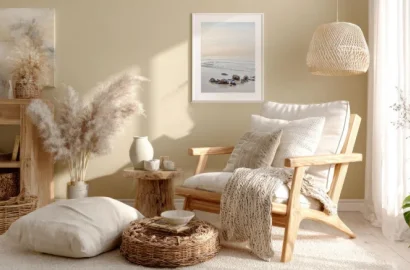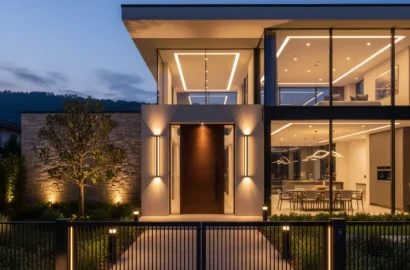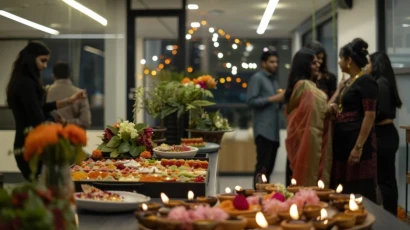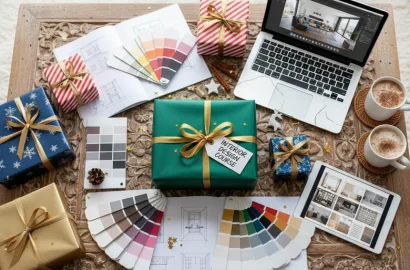Here’s a complete guide to visual merchandising and its relationship to retail design. Learn the key principles, benefits, and how the two disciplines work together.
Visual merchandising–the discipline of how products are arranged and displayed in-store and online–is a key differentiator when it comes to retail success. It draws customers into a retail space, guides purchasing decisions, impacts customer satisfaction, and boosts overall sales.
While product placement is a key element of visual merchandising, it doesn’t start and end there. Visual merchandising also involves reinforcing a brand’s identity, telling a story that inspires or motivates, and creating memorable, immersive shopping experiences. When based on customer preferences, retail trends, and sales data, and intersected with retail design principles, visual merchandising supports the creation of stores that aren’t just functional or nice to look around but are engaging, immersive, and profitable, too.
In this article, we delve into the principles of visual merchandising, its value to businesses and customers, and the tips and best practices needed to implement it successfully. We also discuss how it interweaves with retail design, the similarities and differences between the two disciplines, and how their combination can be a recipe for retail success.
Whether you’re looking to elevate your current display strategies or are just beginning to explore the world of visual merchandising, this article will deepen your understanding of the fundamentals and give you actionable insights to try out right away.
Contents:
- What is visual merchandising?
- What does a visual merchandiser do?
- What are the principles of visual merchandising?
- Why is visual merchandising important?
- What’s the correlation between visual merchandising and retail design?
- Top visual merchandising tips and techniques
- Conclusion
Let’s learn more about visual merchandising!
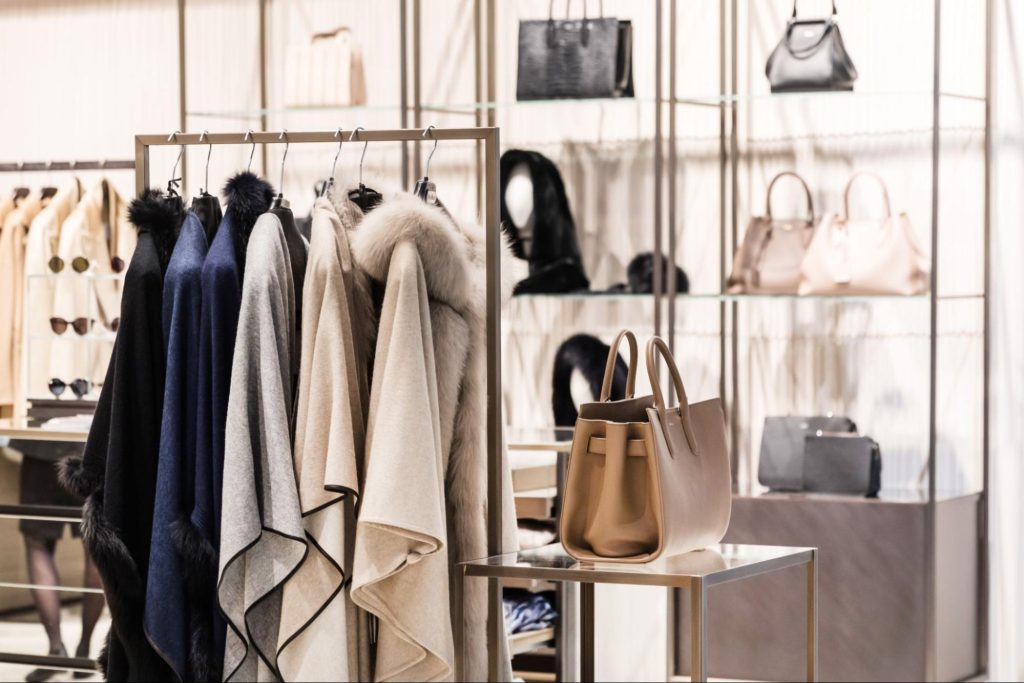
What is visual merchandising?
Visual merchandising is the practice of organizing, arranging, and designing product displays, both in-store and online, with the goal of presenting goods in their best light to attract customers and, ultimately, boost sales for retailers.
A key part of the visual merchandising process is optimizing the presentation of products and services to highlight their best features and showcase their benefits. This is often achieved by combining lighting techniques, color schemes, and props in window displays and throughout a physical store. Using these tools and additional design skills and techniques, the visual merchandising team tells a story around the products and creates an aesthetically pleasing environment to stimulate interest in in-store visitors. The presentation of products typically aligns with the brand’s existing visual identity, ensuring a cohesive and familiar experience that mirrors the brand’s online shopping offering.
The practice of visual merchandising is supported by the insights drawn from customer data, buying patterns, and retail trends. This data informs the visual merchandising team about popular products and customer preferences who can then use this knowledge to inform how products are arranged, presented, and showcased most effectively.
What does a visual merchandiser do?
The visual merchandiser is responsible for creating engaging visual displays in-store, in window settings, and online, that optimize the appearance of a retailer’s products and services and enhance the shopping experience for customers.
By highlighting specific products, seasonal deals, special offers, and related items in an attractive and eye-catching way, the visual merchandiser encourages sales. They do this by boosting the store’s overall aesthetic using props, colors, lighting, and signage that tell a story with the retailer’s products and inspire purchases. In addition, the visual merchandiser ensures that the brand’s visual identity is carefully interwoven throughout their displays.
Another important aspect of the visual merchandiser’s role is user research. A visual merchandiser will be responsible for knowing the user’s needs, preferences, and goals when entering the store and will work to address all of these efficiently with their merchandising layout and presentation designs. They may gather and analyze this customer data themselves via interviews and focus groups or work from a store’s existing sales data to know which products need to be highlighted or recommended.
Let’s take a look at some of the key responsibilities of the role:
- Designing and implementing visually compelling product displays that encourage sales
- Highlighting special offers, seasonal promotions, and exclusive items based on the goals and strategy of the business
- Collecting and analyzing data on customer behavior to optimize product placement and give popular items prominence
- Working with sales data to know which products to highlight or recommend
- Maintaining a visually cohesive and appealing retail environment
- Aligning all product displays with the brand’s visual identity
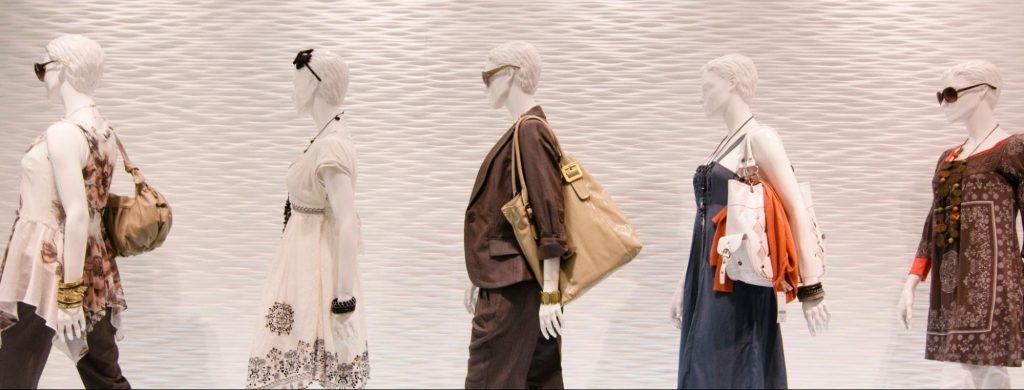
What are the principles of visual merchandising?
The practice of visual merchandising is based upon a range of principles that guide the team as they create immersive and compelling shopping experiences in stores and online. Let’s take a look at them.
1. Balance and harmony in displays
Getting the balance and harmony right in product displays and presentations is fundamental to good visual merchandising. Not only does prioritizing these principles lead to a visually pleasing environment and a cohesive overall in-store aesthetic, but it also prevents visitors from feeling overwhelmed by too many products or confronted with too many purchasing decisions.
Balance refers to the visual weight of the items used in a display and ensuring that this weight is evenly distributed. A visual merchandiser may create a symmetrical arrangement using similarly-weighted items, for example, if they wish to promote a stable aesthetic. However, an asymmetrical arrangement of items, in which the products have dissimilar visual weights, can be a useful tool for creating a more dynamic picture.
Harmony in this context simply refers to all of the design elements within the display working well together and creating a unified aesthetic. A visual merchandiser will bring together products of complementary colors, shapes, and sizes that provide a satisfying visual rhythm to achieve this cohesive and natural impression.
2. Use of color, lighting, and texture
A visual merchandiser utilizes color, lighting, and textures to alter the perception of products and create different atmospheres within a store.
The use of color evokes a range of emotions in shoppers while implementing bold patterns is effective at drawing attention. When color is used impactfully, it can attract new customers to a product, change the way the space feels, and influence a shopper’s mood and purchasing behavior.
Lighting is crucial for highlighting products, creating a mood, and boosting the store’s atmosphere. While ambient lighting can make a space feel cozy and welcoming, spotlights are a good choice for drawing attention to specific goods or promotional offers.
Whether used to elevate a display or to create a more warming in-store atmosphere, texture adds depth to merchandise arrangements and offers tactile appeal. Customers are more likely to engage with products that have interesting textures, making incorporating textiles into a display an effective tool for capturing visitors’ interest.
3. Effective product placement
Product placement refers to the strategic positioning of products within a store or even within the display itself to ensure they attract customers’ attention at just the right moment.
A good rule of thumb is to place high-demand and seasonal items at eye level to ensure they can’t be missed while similar, complementary, related, or relevant products should be grouped together to encourage cross-selling and impulse purchases.
Store entrances are an effective spot for placing new products, while small, quirky, and cheaper items should be placed close to the checkout to encourage customers to splurge on non-essential items just before they pay.
4. Focal points and storytelling
A focal point refers to the central point of attraction in a product display. Some visual merchandisers will simply use a standout item and a clearly-labelled sign to achieve this effect. Meanwhile, others might use a combination of lighting, colors, textures, and props to captivate customers who might otherwise walk past.
Storytelling is an important technique used by visual merchandisers to help customers resonate with particular goods or services. It enhances the overall shopping experience by creating a narrative or showcasing a theme that customers can relate to or want to be a part of.
A display for a new swimwear collection might embody a nautical theme, for example, with images of the sea or boats used as a backdrop. A product display for a seasonal sale on knitwear, on the other hand, might tell a story of cozy evenings by incorporating soft lighting, woven textiles, and mannequins placed amongst traditional furniture wearing the clothing on sale.
Both focal points and storytelling help to create a more immersive shopping experience for customers, providing inspiration and evoking desire.
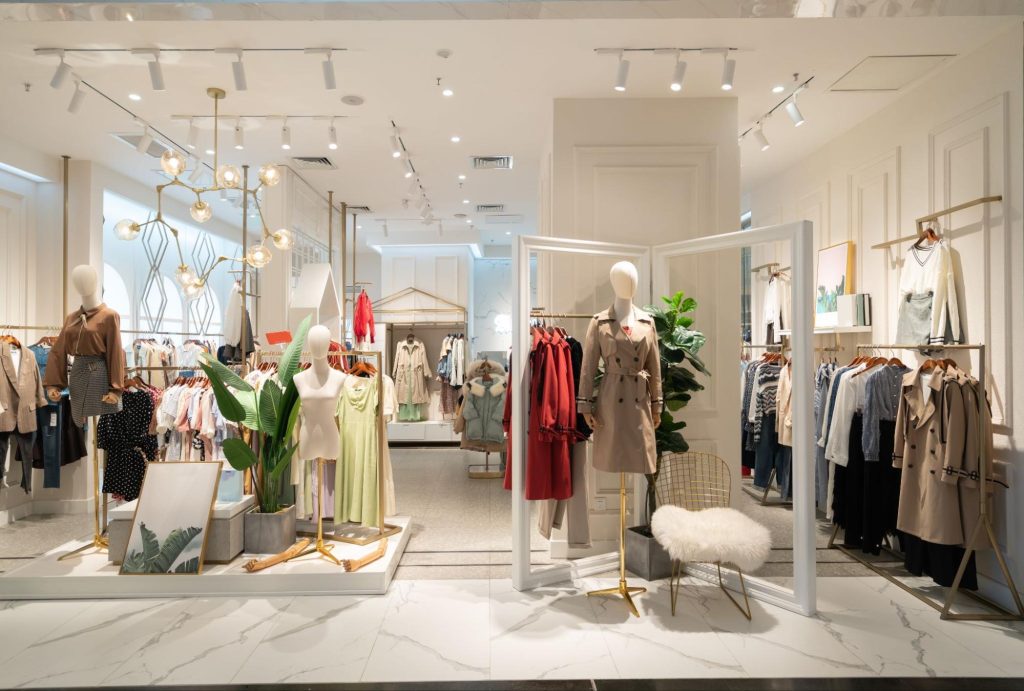
Why is visual merchandising important?
Let’s dive into some key reasons why visual merchandising is important to businesses and their customers.
1. Optimizes the customer experience
One of the core reasons for retailers to invest in visual merchandising is because it truly optimizes the customer experience. This is important because when customers enjoy being in a store, they are more likely to lengthen their visits, make more purchases, be confident in their purchase decisions, and return more frequently. They’re also more likely to recommend the store to friends and family.
As we’ve already seen, there are numerous ways a store can use visual merchandising principles and techniques to optimize the customer experience. The main ones are as follows:
- Thoughtful product placement
- Clear signage
- Attractive and inspirational displays
- Clear organization of products
- Aesthetically-pleasing environment
- Storytelling in product displays
- Grouping relevant items together
- Cohesive visual branding
- Highlighting special offers
2. Drives sales
Driving sales is a key function of visual merchandising. The visual merchandiser showcases products in an appealing yet highly strategic way, thus influencing the buying decisions of customers and encouraging impulse purchases.
For example, related products are often grouped together, while sales or new arrivals are highlighted throughout the store with signs, lights, and vibrant props. When done mindfully, the right displays make products more visible and desirable to customers, guiding the shopper’s journey and leading to more purchases.
3. Reinforces brand identity
Incorporating the colors, materials, style choices, and narrative of a brand, a visual merchandiser reinforces the brand’s identity in-store, aligning the retail space’s look and feel with its values, messaging, personality, and ethos as well as bridging its offline presence with its online one. Achieving a cohesive presence (both online and offline) is extremely important as it helps a brand attract target customers and build familiarity and trust.
4. Creates memorable in-store experiences
These days, shoppers are increasingly looking to physical stores not just to make purchases but to also have tangible experiences with a brand and its products. Well-designed visual merchandising enables this by creating memorable narratives that are interwoven through product displays and decoration, evoking emotions and inspiring customers to engage with products and members of staff.
Seasonal themes, interactive displays, and unique accessories or props all work together to create memorable experiences for customers that lead to increased foot traffic and deeper customer-brand relationships.

What’s the correlation between visual merchandising and retail design?
There are many strong ties between the worlds of visual merchandising and retail design, with both practices seeking to build cohesive and compelling shopping experiences for customers that generate sales and return visits.
There are, however, some noteworthy differences between the two. Retail design typically addresses the overall layout, structure, and functionality of a retail space, honing in on customer movement and flow, lighting, and layout. Visual merchandising, on the other hand, seeks to enhance the presentation of specific products and services within that environment. The visual merchandiser does this by arranging and presenting products and displays strategically to draw attention, highlight key items, and create a story that encourages purchases.
Visual merchandising relies upon the strong foundation set by retail design. It borrows key design elements from the retail designer, such as signs, shelves, and layout, to create visually appealing product displays throughout the space. While retail design is more static, visual merchandising brings a dynamic feel to a space, reflecting the brand’s identity, and optimizing product placement. When the two practices work hand-in-hand, the visual merchandiser and the retail designer are able to create an immersive and intuitive environment that customers can effortlessly navigate and enjoy. This ultimately makes a store more profitable over the long term.
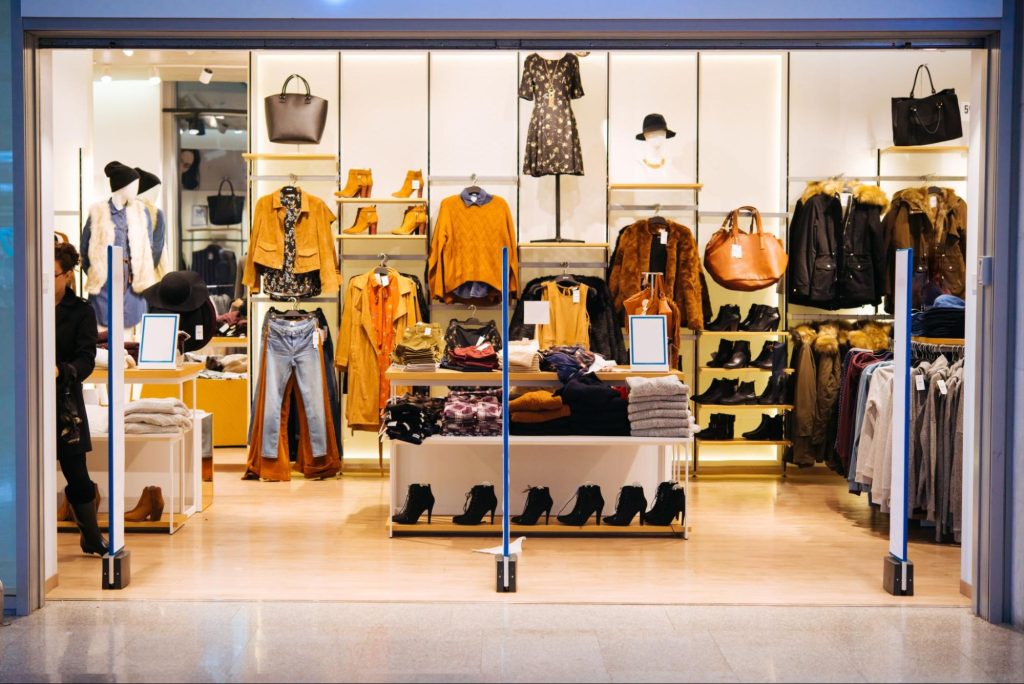
Top visual merchandising tips and techniques
Want to ensure success with your product displays and store layouts? We’ve got the visual merchandising best practices for engaging customers at every stage of their in-store journey.
1. Keep product displays fresh
A shabby or out-of-date product display creates a bad impression with store visitors of a brand and its products. For this reason, a visual merchandiser should always aim to regularly change displays to reflect current trends, new product arrivals, or seasonal promotions. When displays are fresh, new, and exciting, the store environment becomes dynamic and engaging for customers and encourages them to regularly come back.
2. Stay ahead of retail and consumer trends
By regularly analyzing a store’s sales data and following retail and consumer trends, a visual merchandiser is better positioned to design compelling product displays that are both modern and relevant to their target customers. Incorporating popular, new technologies and on-trend aesthetics in product displays are just two of the ways that a brand can maintain a competitive edge over similar retail outlets.
3. Group related products together
Cross-selling and impulse purchases make up a huge percentage of retail sales. For this reason, it’s important to group related products together. This technique gives your products context, inspires customers to use products in new ways, and helps them discover items they might not have otherwise known about. Consider creating a scene with a range of different products that tell a story–customers may well be inspired to buy more products than they intended in order to recreate the same idea.
4. Appeal to all five senses
While there’s no getting away from the convenience of shopping online, physical stores lure customers into stores by offering an immersive shopping experience that cannot be replicated in a digital environment. They can do this by incorporating numerous sensory elements into their store layouts and displays, such as scents, sounds, textures, and visuals. When done strategically and in conjunction with robust storytelling, engaging multiple senses can strengthen emotional connections between customers and a brand as well as boost the overall atmosphere.
Conclusion
In this article, we’ve learned about the value visual merchandising principles and practices can bring to a store and its customers. From creating compelling product displays that encourage sales to maintaining a visually cohesive environment that supports the brand identity, this is a discipline that, when implemented strategically, brings about increased sales, return visits, and positive customer reviews – all of which stores cannot afford to ignore.
When combined with strong retail design foundations such as an intuitive layout, seamless flow of movement and people, and a highly functional interior structure, visual merchandising is able to fully optimize the customer experience, reinforce brand identity, and create memorable in-store experiences.
Next Steps
If you enjoyed this article and would like to learn more about interior design, head back to AND Academy’s blog for more articles like this one. We also recommend you check out this project by AND Learner, Sonali Khajuria to get inspiration for your next interior design project.
In case you need further assistance, here are some resources to consider:
- Watch this session by Snehanshu Mukherjee, Founding Partner at T.E.A.M and Mansi Almadi, an Interior Designer at Studio Lotus
- Talk to a course advisor to discuss how you can transform your career with one of our courses.
- Check out our Interior Design courses – all courses are taught through live, interactive classes by industry experts.
- Take advantage of our scholarship and funding options to overcome any financial hurdle on the path of your career transformation.
Note: All information and/or data from external sources is believed to be accurate as of the date of publication.

